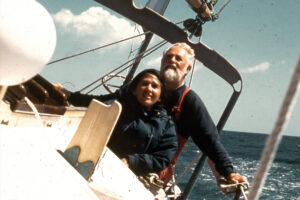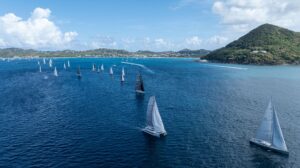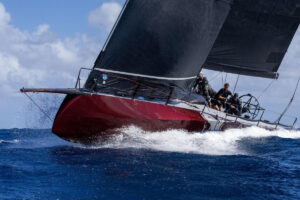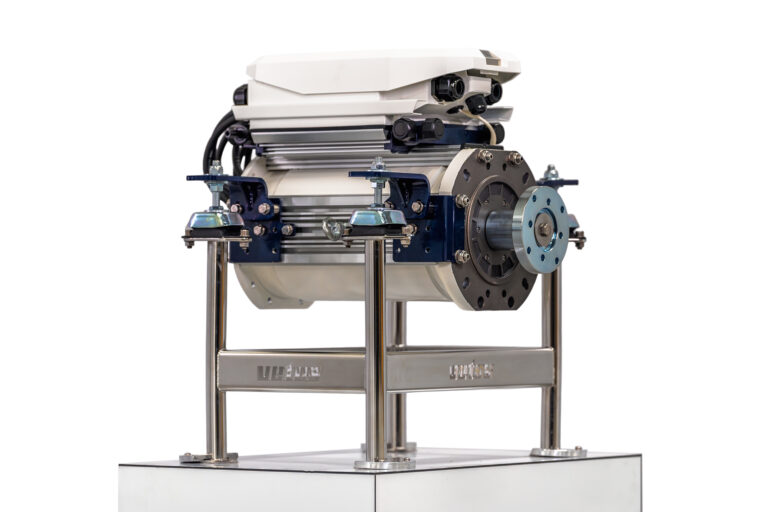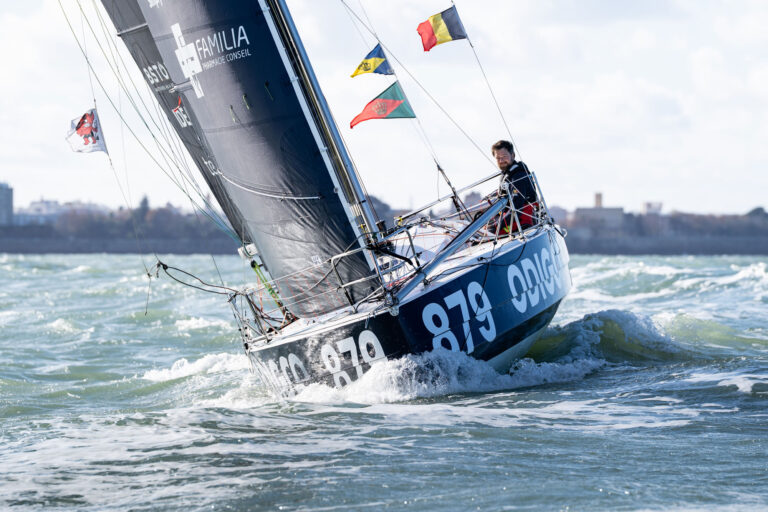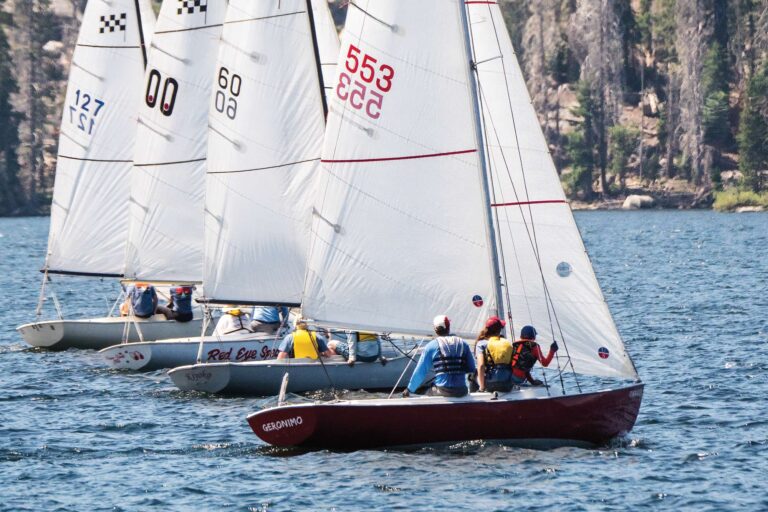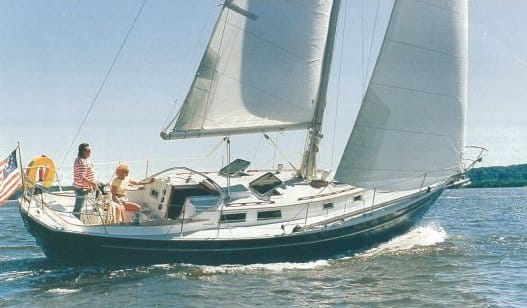
Traditional looks combined with modern features draw frequent compliments for the Niagara 35, which was designed by Mark Ellis and built from 1978 to 1990 by Hinterhoeller Yachts in St. Catherines, Ontario.
Under way, the boat is stable and stiff, and we’ve had the rail of our Niagara 35, Phantasia II, in the water only once, when beating down Lake Huron in 20 knots of wind. On that same trip we hooted and hollered downwind at over 8 knots on a day on which virtually no one else was out. While the boat tracks and maneuvers well, sail trim and the right sail combinations really make or break progress upwind or in light air.
A sudden encounter with a rock in poorly charted Georgian Bay assured us that Hinterhoeller built a tough boat. No water came in, and the only visible damage was mangled lead on the leading edge of the keel.
Below the waterline, a semibalanced spade rudder complements a longish rather than deep keel that’s massively faired into the hull with a substantial sump. The hull is semicored and needs to be monitored, but Niagara 35s aren’t known to have blister problems.
On deck, a short bowsprit extends the foretriangle and supports double anchor rollers. Later models came rigged with an inner forestay on the large and secure foredeck, and many older ones have been similarly retrofitted, once duly reinforced. The keel-stepped, single-spreader rig is staunchly supported with double lowers, and the chainplates tie into accessible interior knees heavily bonded to the hull. Jibs can be sheeted to an aluminum toerail on the bulwark or to an inner track on the wide side decks. On older boats, the balsa-cored decks should be checked for water saturation around fittings.
The cockpit seats have high backs for comfort and are long enough for stretching out; beneath are deep lockers. A drained and vented propane locker aft holds two 20-pound tanks. A bridge-deck keeps the companionway secure.
The interior of our Niagara 35 was one of two configurations. It’s an unusual but intelligent design for extended coastal cruising for a couple.
The companionway leads to the aft cabin, which has a smallish double berth to port and a quarter berth to starboard with a stand-up nav station on top of a large dresser at its head.
Doors lead from the aft cabin to the head and to the galley. Another door opens to the head from the saloon, which is largely forward of the mast. Sitting in the saloon with these doors open, you have a view of the entire length of the boat, which–with over 6 feet of headroom and lit by four fixed windows, four opening ports, and four hatches–has a sense of openness that belies its size. When fitted with lee cloths, the saloon settees either side of the drop-leaf table make excellent sea berths.
A hanging locker to starboard and drawers and lockers to port separate the saloon from the forward cabin, which on our boat is given over to sail stowage, bins, lockers, and a workbench complete with vise. A deep chain box low in the bow can be divided for chain and rode.
The engine, behind the companionway stairs, is more accessible than on many boats this size.
Some Niagara 35s have had lavish upgrades, which can be reflected in their prices, but early boats in basic condition are listed as low as $50,000. Prices for the later Encore version, which has a conventional V-berth forward, tend to be higher.
Jayne Finn and her partner, Mike Evans, will take Phantasia II from Cobourg, Ontario, this summer to Gaspé and the Bras d’Or lakes.
NIAGARA 35
LOA 35′ 1″ (10.69 m.)
LWL 26′ 8″ (8.13 m.)
Beam 11′ 5″ (3.48 m.)
Draft 5′ 2″ (1.58 m.)
Sail Area 598 sq. ft. (55.6 sq. m.)
Ballast (fin keel) 5,500 lb. (2,495 kg.)
Displacement 15,000 lb. (6,804 kg.)
Ballast/D .37
D/L 353
SA/D 15.7
Water 80 gal. (303 l.)
Fuel 20 gal. (76 l.)
Engine Westerbeke 29-hp. diesel
Designer Mark Ellis

